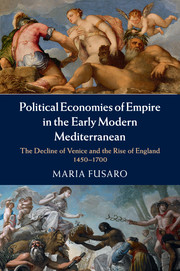 Political Economies of Empire in the Early Modern Mediterranean
Political Economies of Empire in the Early Modern Mediterranean Book contents
- Political Economies of Empire in the Early Modern Mediterranean
- Political Economies of Empire in the Early Modern Mediterranean
- Copyright page
- Contents
- Figures, maps and graphs
- Preface
- Book part
- Note on documentary sources
- Note on dates and spelling
- Glossary
- Frontispiece
- Introduction
- 1 The medieval background
- 2 The reversal of the balance
- 3 The Ottoman Levant
- 4 Genoa, Venice and Livorno (a tale of three cities)
- 5 Trade, violence and diplomacy
- 6 Diplomacy, trade and religion
- 7 The Venetian peculiarities
- 8 The English mercantile community in Venice
- 9 The English and other mercantile communities
- 10 The goods of the trade
- 11 Empires and governance in the Mediterranean
- 12 Coda and conclusions
- Printed primary sources and bibliography
- Index
- References
Printed primary sources and bibliography
Published online by Cambridge University Press: 05 May 2015
- Political Economies of Empire in the Early Modern Mediterranean
- Political Economies of Empire in the Early Modern Mediterranean
- Copyright page
- Contents
- Figures, maps and graphs
- Preface
- Book part
- Note on documentary sources
- Note on dates and spelling
- Glossary
- Frontispiece
- Introduction
- 1 The medieval background
- 2 The reversal of the balance
- 3 The Ottoman Levant
- 4 Genoa, Venice and Livorno (a tale of three cities)
- 5 Trade, violence and diplomacy
- 6 Diplomacy, trade and religion
- 7 The Venetian peculiarities
- 8 The English mercantile community in Venice
- 9 The English and other mercantile communities
- 10 The goods of the trade
- 11 Empires and governance in the Mediterranean
- 12 Coda and conclusions
- Printed primary sources and bibliography
- Index
- References
- Type
- Chapter
- Information
- Political Economies of Empire in the Early Modern MediterraneanThe Decline of Venice and the Rise of England, 1450–1700, pp. 359 - 395Publisher: Cambridge University PressPrint publication year: 2015


